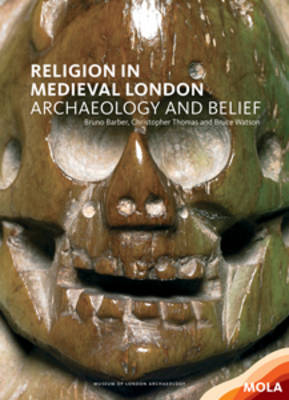Religious belief was central to the lives - and deaths - of all medieval Londoners. Religion was fully integrated into the social and political order, providing the population with an understanding of their place in the world and inspiring artists, architects and craftspeople. Belief motivated progressive acts such as early forms of social provision and medical care but was also used to justify wars of conquest and the brutal repression of diversity. Archaeology sheds light on many aspects of belief: from organised religion, both Christianity and Judaism, to superstition or witchcraft; places of worship from the smallest parish churches to the great Cathedral of St Paul; tiny objects of personal devotion to entire monastic landscapes. Monasteries include communities cut off from the world, hospitals providing for London's poor or the headquarters of military religious orders behind the Crusades. Cemetery excavations reveal how Londoners responded to mortality both individually and together in the face of catastrophes such as the Black Death, while the events of the Reformation dramatically transformed both institutions and beliefs. This fully illustrated book provides an introduction to the evidence of belief from the Museum of London's archaeological excavations in the capital, with a particular focus on the programme of work, supported by English Heritage, on the sites of many of London's monasteries.
- ISBN10 1907586075
- ISBN13 9781907586071
- Publish Date 22 August 2013 (first published 15 November 2011)
- Publish Status Active
- Publish Country GB
- Publisher Museum of London Archaeology
- Imprint Museum of London Archaeology Service
- Format Paperback
- Pages 100
- Language English
